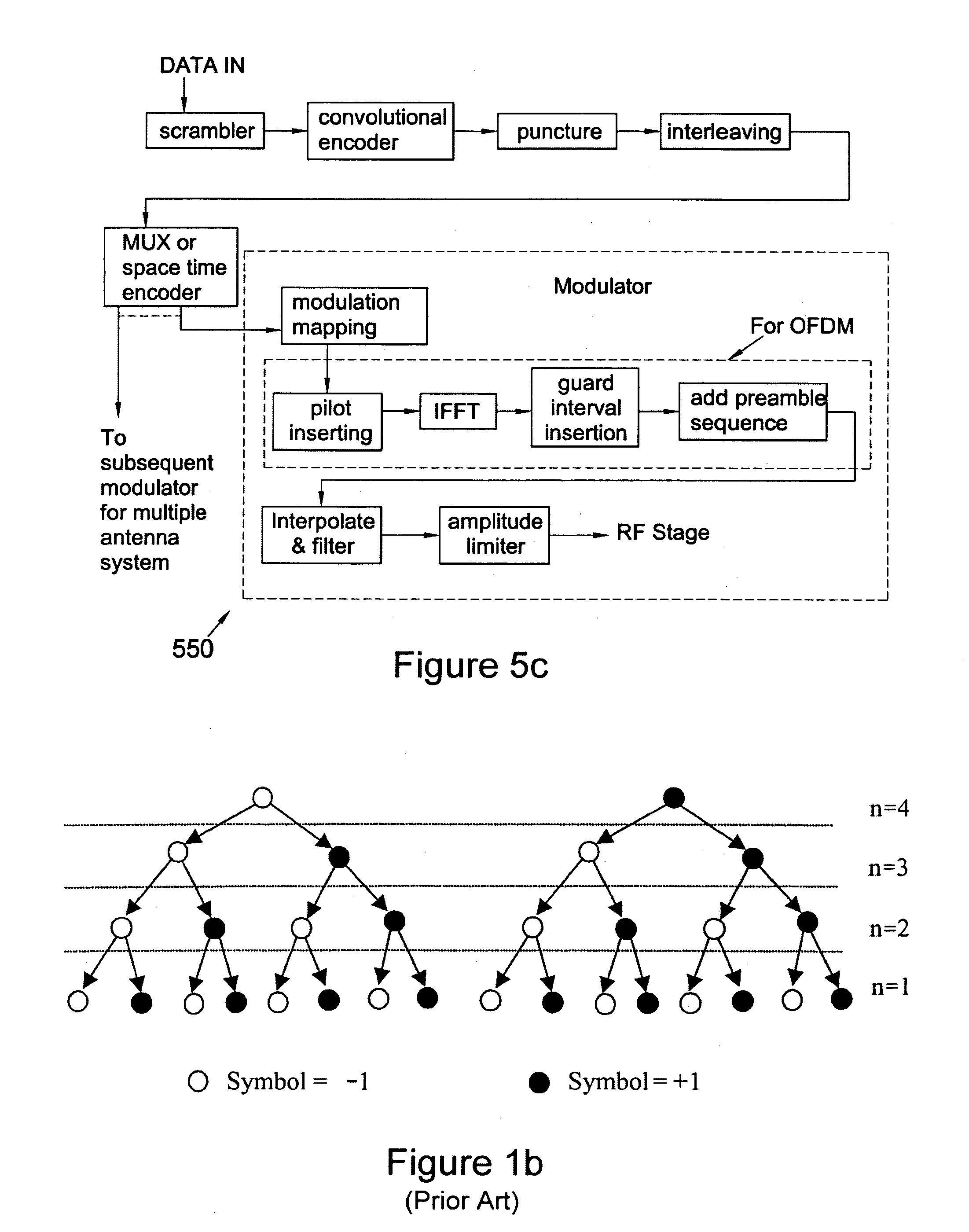Signal decoding methods and apparatus
a signal and control code technology, applied in the field of signal decoding methods and apparatuses, can solve the problems of increasing data rates, difficult decoding signals received over mimo (multi-input multiple-output) channels, and symbols transmitted over different channels are then uncorrelated, so as to achieve the effect of straightforward implementation
- Summary
- Abstract
- Description
- Claims
- Application Information
AI Technical Summary
Benefits of technology
Problems solved by technology
Method used
Image
Examples
Embodiment Construction
[0048] Broadly speaking one preferred embodiment of a sphere decoder may be described as a decoder for decoding a transmitted signal encoded as a string of symbols and received over a channel as a received signal, each transmitted symbol having one of a plurality of values, the decoder comprising: means for searching for one or more candidate strings of symbols, a candidate string of symbols comprising a string of candidate symbols, by searching for candidate symbols of said string within a region of a multi-dimensional lattice determined by said channel response, said lattice having one dimension associated with each of said symbols of said string, said region being defined by distance from said received signal; and means for decoding a said string of symbols for said received signal by selecting one or more of said candidate strings of symbols; wherein said means for searching for candidate symbols is configured to select candidate values for said transmitted symbols and to test w...
PUM
 Login to View More
Login to View More Abstract
Description
Claims
Application Information
 Login to View More
Login to View More - R&D
- Intellectual Property
- Life Sciences
- Materials
- Tech Scout
- Unparalleled Data Quality
- Higher Quality Content
- 60% Fewer Hallucinations
Browse by: Latest US Patents, China's latest patents, Technical Efficacy Thesaurus, Application Domain, Technology Topic, Popular Technical Reports.
© 2025 PatSnap. All rights reserved.Legal|Privacy policy|Modern Slavery Act Transparency Statement|Sitemap|About US| Contact US: help@patsnap.com



